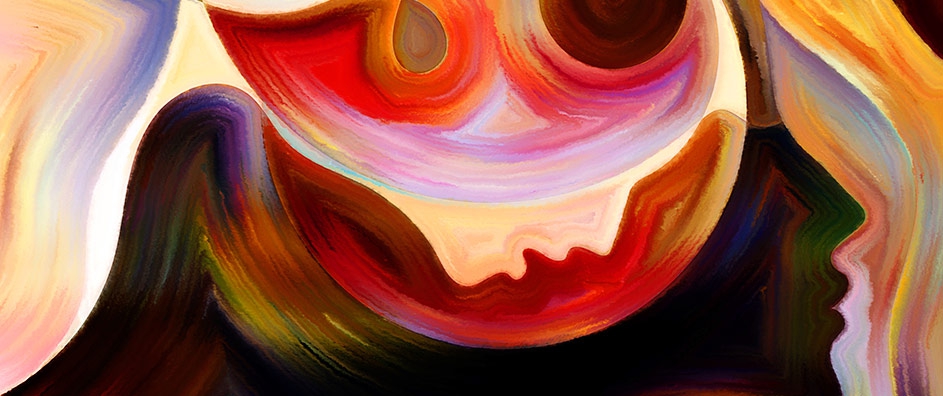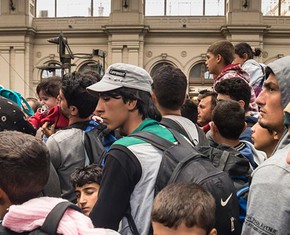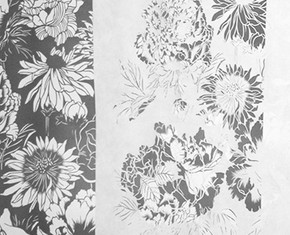The views expressed in our content reflect individual perspectives and do not represent the authoritative views of the Baha'i Faith.
The pupil dilates in darkness and in the end finds light, just as the soul dilates in misfortune and in the end finds God. – Victor Hugo, Les Misérables
The darker the night, the brighter the stars,
The deeper the grief, the closer is God! – Fyodor Dostoyevsky, Crime and PunishmentWe know that God is everywhere; but certainly we feel His presence most when His works are on the grandest scale spread before us; and it is in the unclouded night-sky, where His worlds wheel their silent course, that we read clearest His infinitude, His omnipotence, His omnipresence. – Charlotte Brontë, Jane Eyre
Life is God’s novel. Let him write it. – Isaac Bashevis Singer
Is art a path to God?

Mark Helprin
A Jewish-American author I once interviewed—Mark Helprin, the author of the wonderful novel Winters Tale—told me something I’ve never forgotten. He said “I think of myself as more of a 12th-Century artist than a modern one—I write, not for my own pleasure or the pleasure of my audience, but to praise God.”
This struck me as both unusual and profound, so I did a little investigating.
I learned that the great western artists of the 1300’s–that time of romantic troubadour poetry and epic painters and Gothic architecture and what historians call the “High Middle Ages Renaissance”–really did think of their art as a way to express their love for the Creator. They often saw their own creations as feeble but valiant attempts to mimic God’s creative process. If they were painters, they reveled in their ability to faithfully re-create nature, and to portray the inner spiritual reality of their subjects. If architects, they built enormous, towering cathedrals in praise of God. If poets, they focused on Latin literature and its beautiful combination of the sacred and the secular. If scholars and philosophers like Aquinas or Bonaventure, they invented and practiced a new way of looking at reality and knowledge they called scholasticism, which first promoted the modernist idea that diversity of opinion does not necessarily mean contradiction.
Those artists celebrated their own inspiration as a gift from God, and tried to perfect their art to return the favor.
All of this new European flowering of art, literature and the sciences had a source that scholars now increasingly agree upon: Islam. Surprised? If you closely studied the history of the period, you might not be. Here’s how it happened, summarized (and over-simplified) in a few sentences: Muhammad’s revelation unleashed enormous creative energies into the world, and made a previously backwards and savage Arab peninsula into the world’s most advanced culture at the time. Because the Muslim world had expanded into medieval European areas like Spain and Sicily, and because of the increasing trade between Muslim and Christian cultures, Islamic civilization contributed a great deal to Europe, helping to bring it out of the Dark Ages. Islamic discoveries in higher math, physics, astronomy, medicine, music and the arts, the university system and European renewal of the ancient classical ideas from Aristotle, Euclid and others—which had been lost, and then re-translated from Arabic—all created the conditions necessary to spur the High Middle Ages Renaissance:
In the early ages of Islam the peoples of Europe acquired the sciences and arts of civilization from Islam as practiced by the inhabitants of Andalusia. A careful and thorough investigation of the historical record will establish the fact that the major part of the civilization of Europe is derived from Islam; for all the writings of Muslim scholars and divines and philosophers were gradually collected in Europe and were with the most painstaking care weighed and debated at academic gatherings and in the centers of learning, after which their valued contents would be put to use. – Abdu’l-Baha, The Secret of Divine Civilization, p. 88.
Artists led the way, as they usually do. The western artists of the time found enormous inspiration in the upwelling of new knowledge emanating from the great medieval Islamic centers of learning and culture, transmitted to them by the expansion of trade routes, and even brought back by soldiers and statesmen returning from the Crusades. That interchange, and the knowledge that came with it, had an enormous influence on European civilization.
The artists in that tumultuous time understood that all true art comes out of our love for the mysterious, the numinous, the unknown, the Hidden Reality. We can all apply that understanding today, by realizing that art—whether you’re creating it, appreciating it or allowing it to open your heart and move your spirit—can connect us directly to the love of God:
I rejoice to hear that thou takest pains with thine art, for in this wonderful new age, art is worship. The more thou strivest to perfect it, the closer wilt thou come to God. What bestowal could be greater than this, that one’s art should be even as the act of worshipping the Lord? That is to say, when thy fingers grasp the paintbrush, it is as if thou wert at prayer in the Temple. – Abdu’l-Baha, from a tablet to a Persian Baha’i.
















Comments
Sign in or create an account
Continue with Googleor